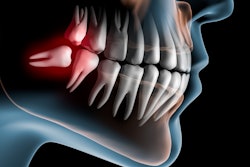Following the publication of a technique back in November and its potential impact on third-molar extraction in 2024 and beyond, we had several readers reach out with questions about the technique and what it could mean for dentistry.
With that in mind, I spoke with Dr. Leigh Colby to get answers to those questions. Dr. Colby is the mind behind TriAgenics and this new technique. During our discussion, we touched on subjects ranging from U.S. Food and Drug Administration approval and timing for the technique to the feedback he has received from general dentists and periodontists.
“The people who get the most excited about this are the periodontists, and the reason for that is they deal with the damage that third molars cause,” Dr. Colby told me. “I know when I was practicing full time, whenever I had third-molar involvement with damage on the distal and second molar, it was an automatic referral," Colby said.
“Almost always, the patients would come back and the periodontist could do very little to undo the damage, so it's eliminating all this damage that occurs.”
As he did in our first interview, in this follow-up discussion, Dr. Colby emphasizes the goal of eliminating complications associated with third-molar removal and improving clinical outcomes for patients. Could this someday become the “standard of care” for third molars? We talk about that and more in our interview below.



















